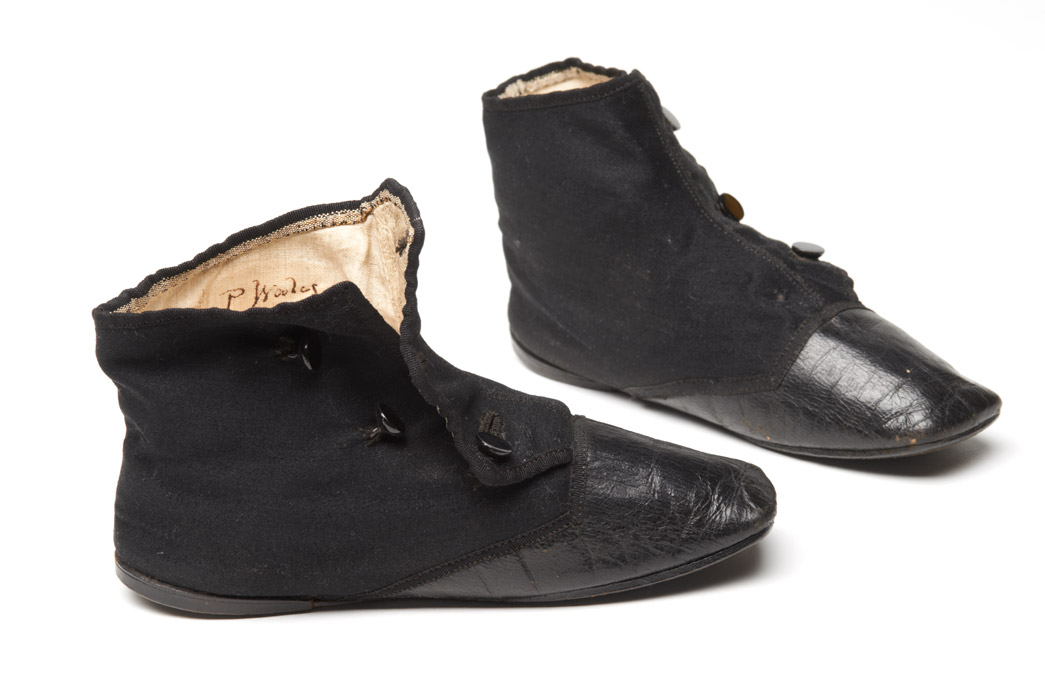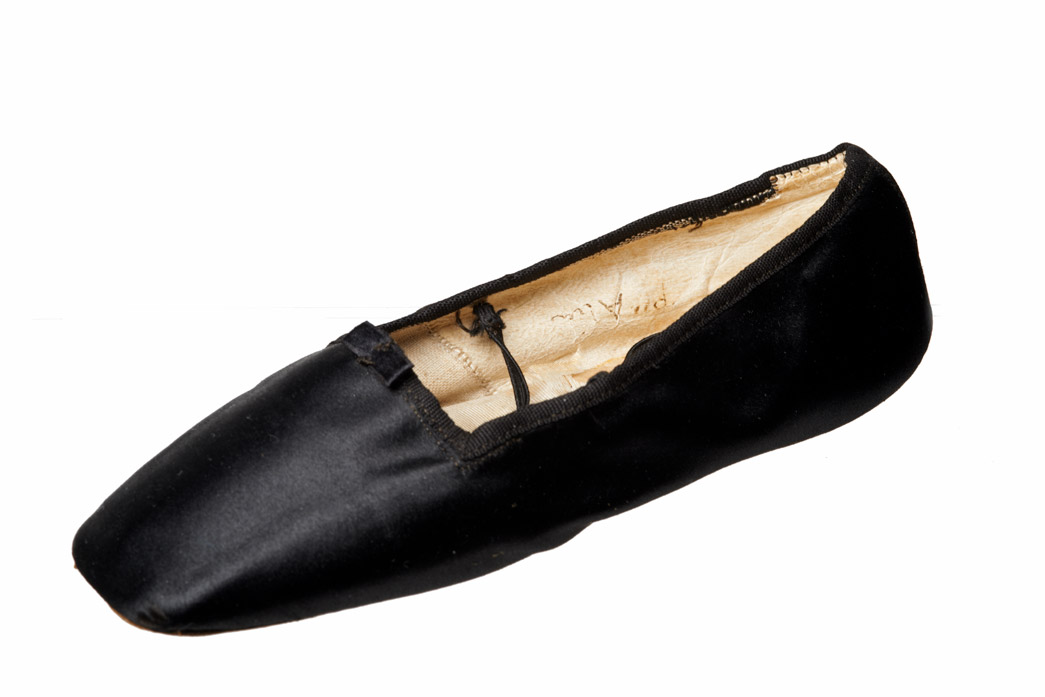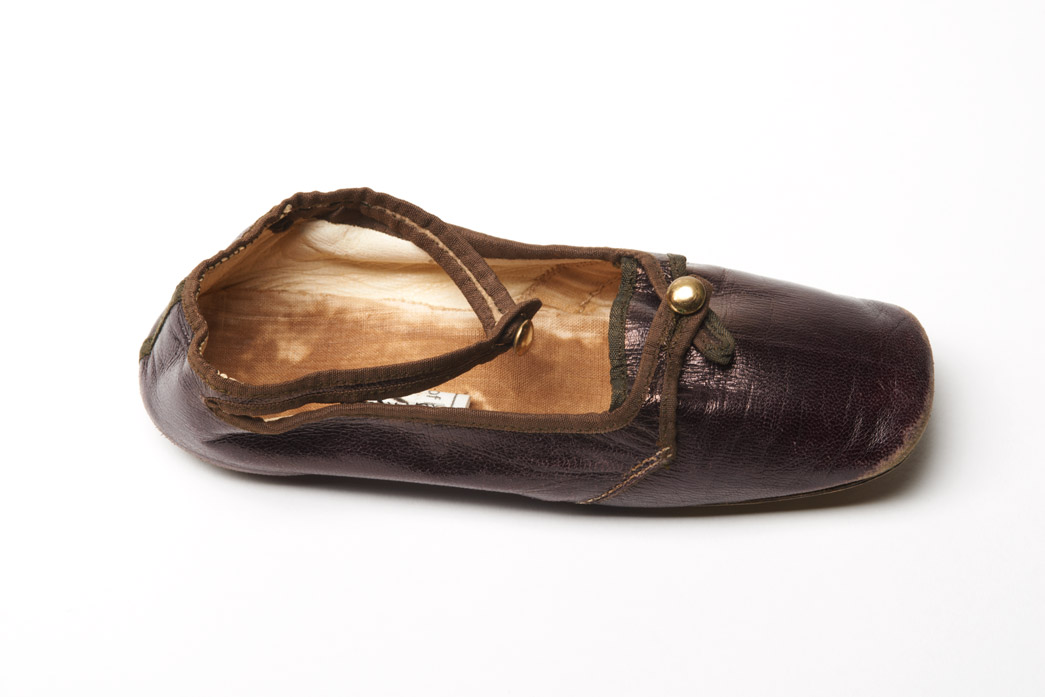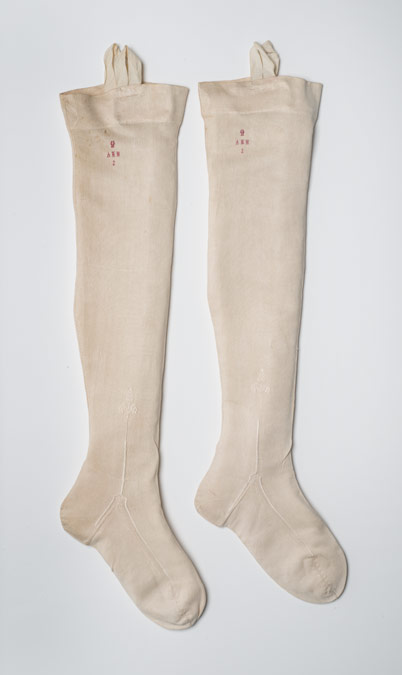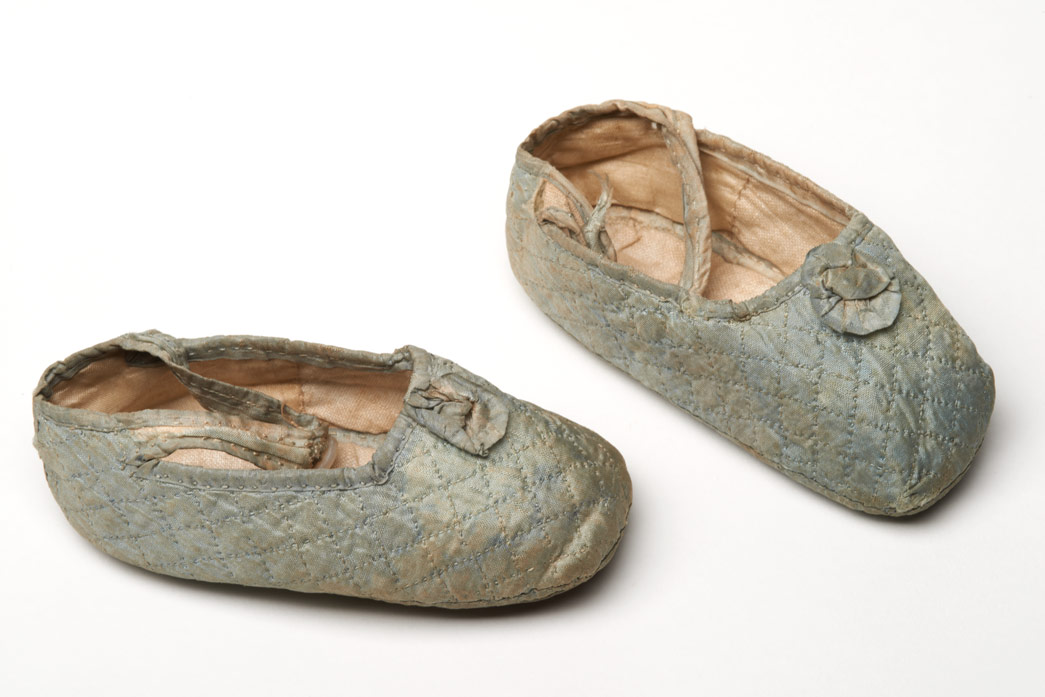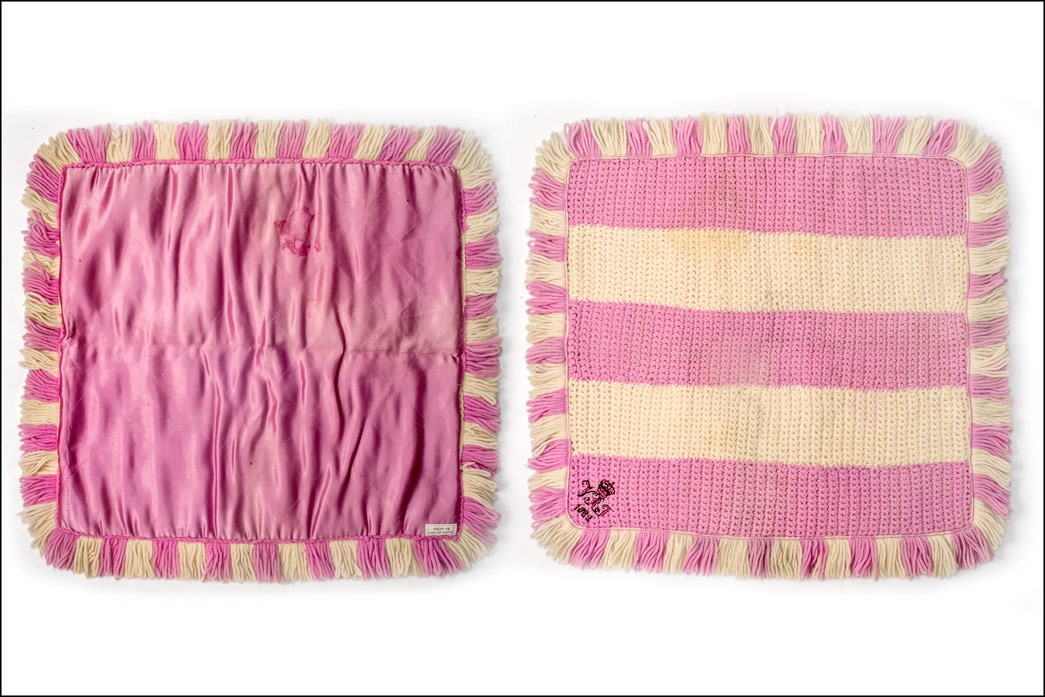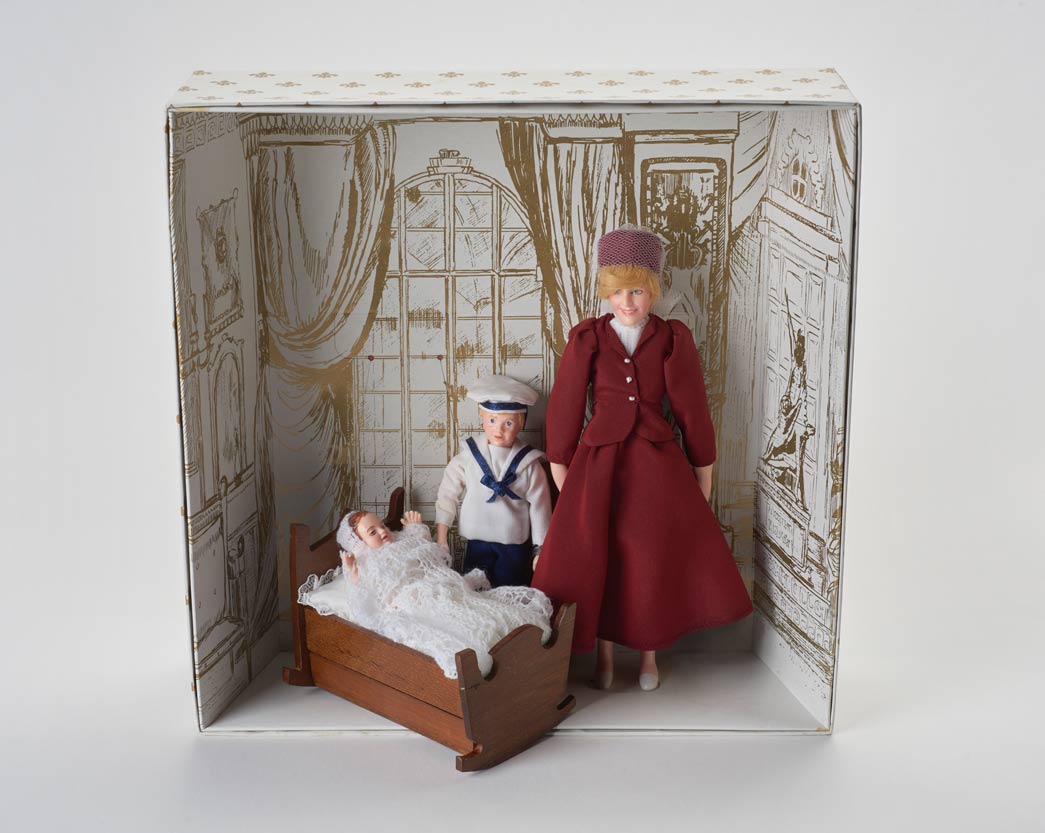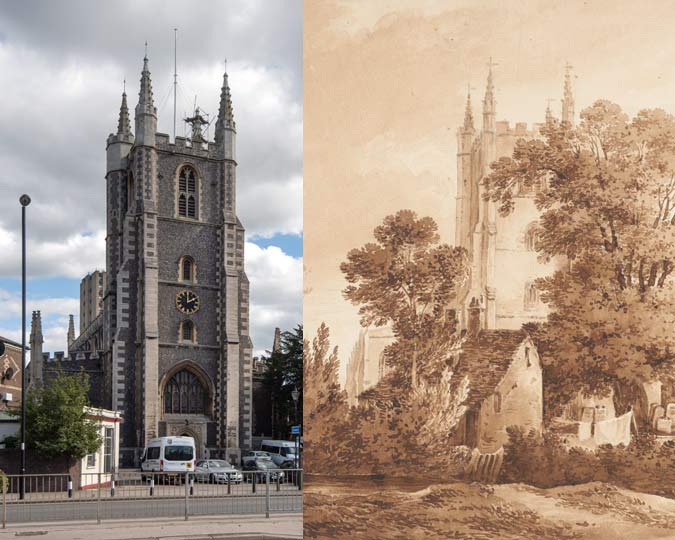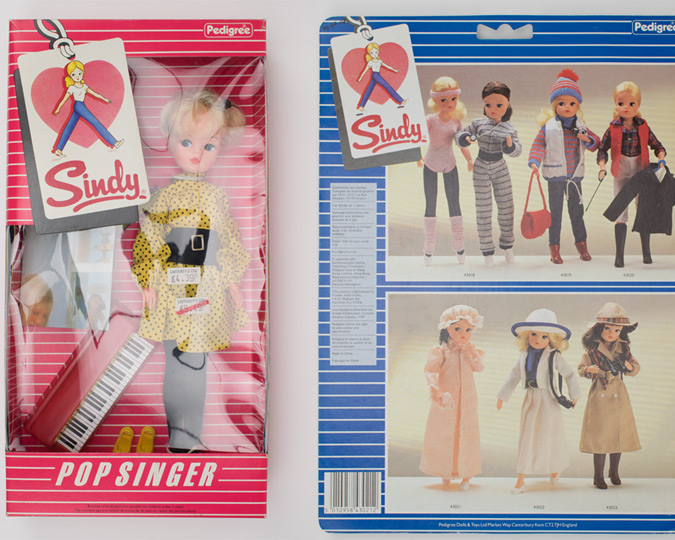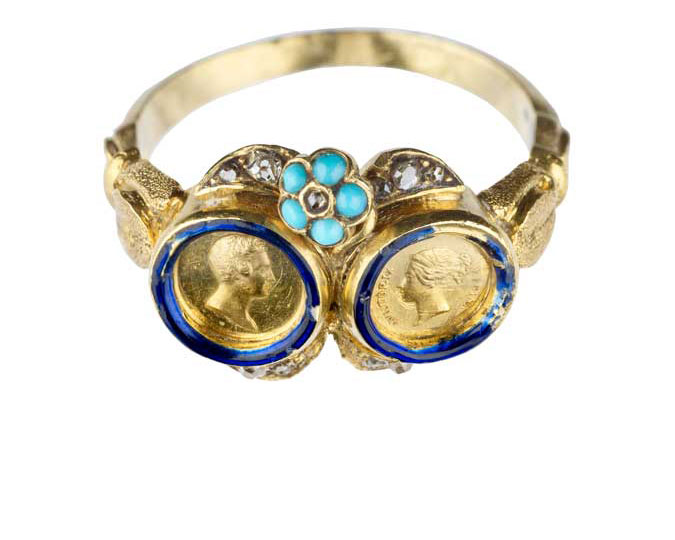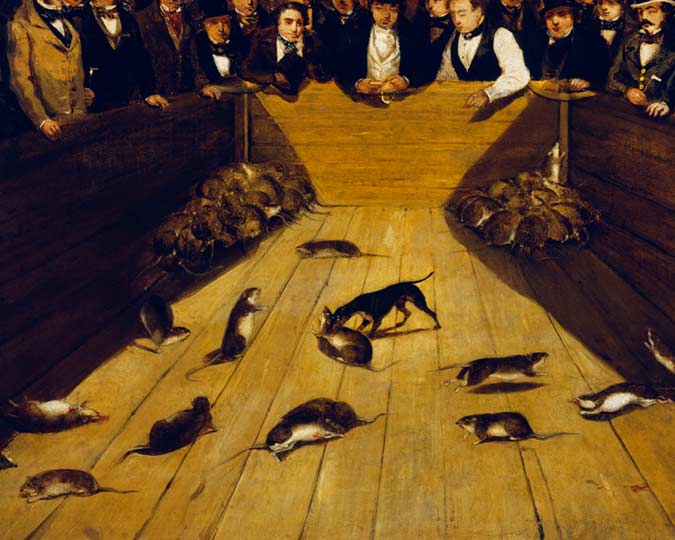We have an extensive collection of royal memorabilia, which includes souvenirs and objects connected with royal births, from Queen Victoria's many children to the birth of Prince Harry.
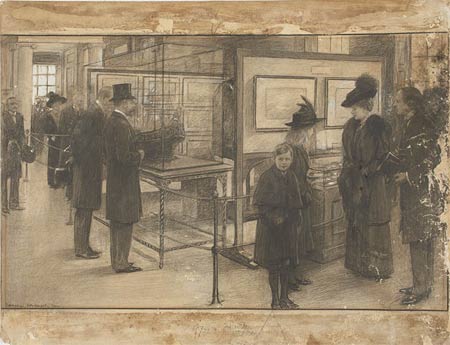
The Royal Family at the Inauguration of London Museum, Kensington Palace, 1912
Sketch showing the royals touring the newly opened London Museum.
The Museum of London is a social history museum: we try to tell the story of the Londoners who lived in this city over the centuries, giving a street-level view of life in the capital. It might come as a bit of surprise that we have an extensive collection of royal memorabilia. After all, a baby prince or princess is hardly a representative Londoner.
Most of this collection comes from the London Museum, founded in 1912 and first based in Kensington Palace. This was long the home for the royal "extended family": Prince Harry and the Duchess of Sussex moved out of Kensington Palace early in 2019, in preparation for the birth of their first child. Many of Queen Victoria's children and grandchildren had apartments in the palace when the London Museum opened, and their patronage has left its mark in our collections.
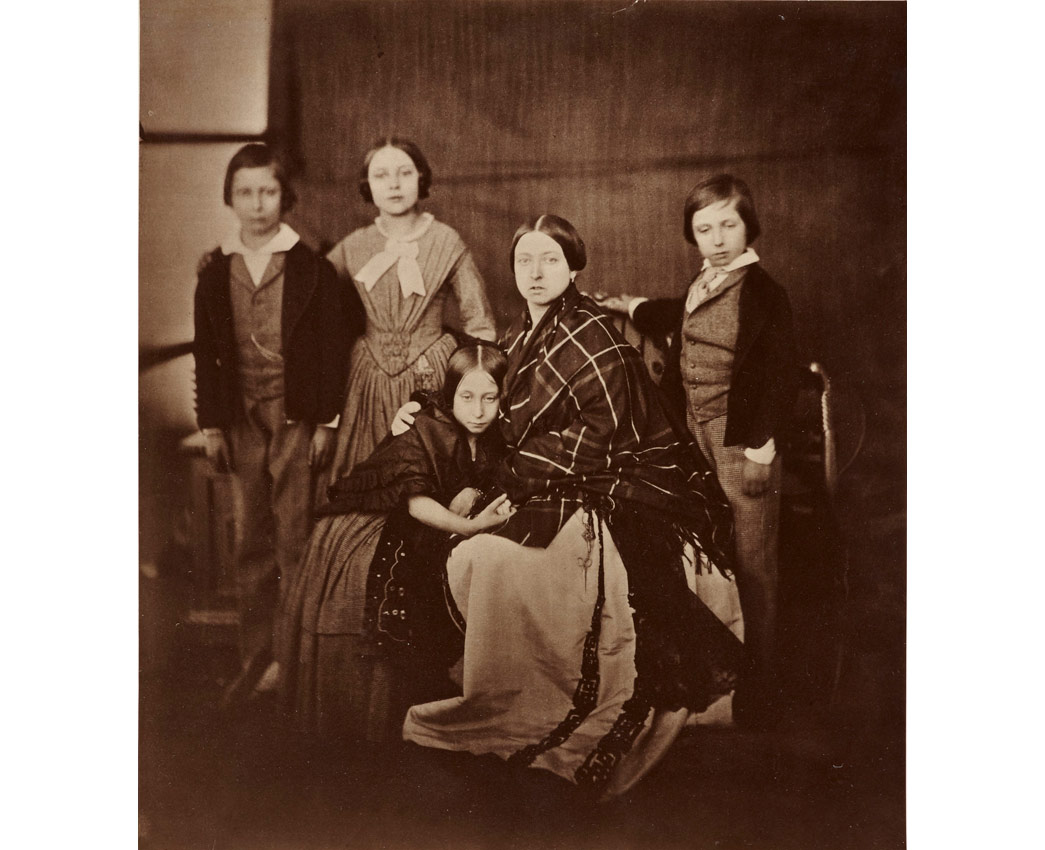
Queen Victoria and her eldest four children, 1854
Left to right: Prince Albert Edward, Princess Victoria, Princess Alice & Prince Alfred. Property of the Royal Collection Trust.
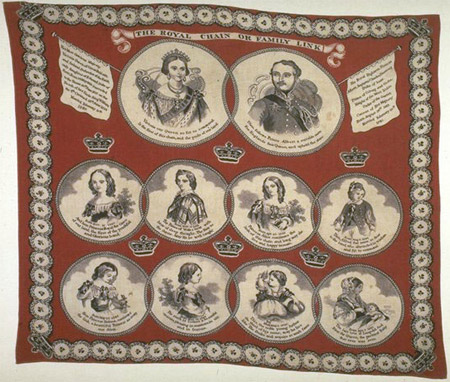
The Royal Chain of Family Line, 1853-57
Souvenir handkerchief showing Queen Victoria, Prince Albert, and eight of their children.
The birth of a child is always a time for celebration, but the birth of a new royal baby is a national and a political occasion. Hereditary monarchies depend on succession, being passed from parent to child. Although Harry and Meghan's new boy is a distant seventh in line to the throne, he is still bound from birth into a traditional hierarchy of blood and power.
Royal families rely on plenty of healthy children in order to continue their bloodline. We can see how important that is by the fate of the last of the Stuart monarchs, Queen Anne. Despite seventeen pregnancies, all of which ended with heartbreaking death or miscarriage, Anne had no surviving heir. On her death in 1714, the crown passed to George of Hanover. He became George I, and it is from him that the current royal family, the House of Windsor, is descended.
For a monarch to produce healthy children is therefore not just a personal goal, but a vital one for dynastic and political stability. Londoners have understood this for centuries, and the birth of a royal child has always been an occasion charged with significance.
This is especially visible during the reign of Queen Victoria; she too had come to throne after a failure of previous monarchs to have legitimate heirs. Her uncles George IV and William IV died without living children produced in wedlock. Victoria, in contrast, had a total of nine children, and the young queen's fecundity (and the health of both her and her offspring) was seen as a sign of good fortune and a guarantee of Britain's monarchy for the future.
Queen Victoria, incidentally, hated both pregnancy (she said it made her feel like a cow) and infants. She wrote: "An ugly baby is a very nasty object. The prettiest are frightful when undressed… as long as they have their big body and little limbs and that terrible froglike action.”
In more modern times, royal births are not quite so politically charged. Nonetheless, after the marriage of Prince William and Kate Middleton there was much speculation about the pressure to have children, particularly the traditional royal "heir and a spare" (in case of the death of the eldest child and heir apparent). People remain fascinated with royal babies, as more recent commemorative items in our collections attest.
This limited-edition doll set was made on the occasion of the birth of Prince Harry in 1985. The three dolls represent Diana, Princess of Wales, Prince William (in sailor suit) and an infant Harry wearing a long baby robe. They were sold in this presentation box, which presumably is meant to represent the interior of Kensington Palace, where Prince Charles and Princess Diana lived with their young children in the 1980s.
Perhaps, as London marks another addition to the Windsor bloodline, we'll collect some more objects showing how royal offspring are seen in the 21st century.








